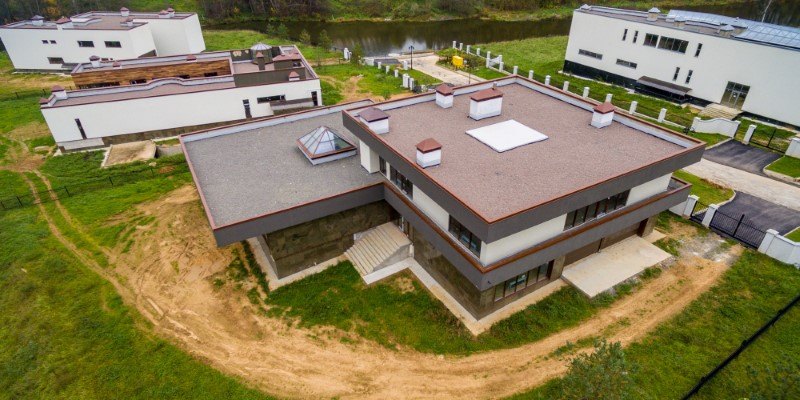Understanding the Appeal of Coworking Spaces and Shared Offices
The modern workspace is evolving rapidly, reflecting changes in how we work, where we work, and the tools we use. A significant trend emerging from this evolution is the rise of coworking spaces. These shared offices have gained popularity among freelancers, startups, and even large corporations looking for flexible and cost-effective workspace solutions.

But what exactly are coworking spaces, and why have they become so appealing to a diverse range of professionals? In this article, well explore the concept of coworking spaces, the advantages they offer, the different types available, and why they are shaping the future of work.
What Are Coworking Spaces?
Coworking spaces are shared office environments where individuals from different companies or industries work together in a communal setting. Unlike traditional offices, coworking spaces are typically designed to be flexible and adaptable, offering a variety of workstations, meeting rooms, and social areas. These spaces are often equipped with amenities like high-speed internet, office supplies, and sometimes even coffee shops or fitness centers. The idea is to create a collaborative environment that fosters creativity, networking, and productivity.
Types of Coworking Spaces
Coworking spaces come in various shapes and sizes, catering to different needs and preferences. Heres a closer look at the most common types:
Open Spaces: These are the most traditional type of coworking spaces, where desks are arranged in an open-plan layout. They encourage collaboration and communication, making them ideal for freelancers and small teams.
Private Offices: For those who need more privacy, many coworking spaces offer private offices within the shared environment. This option is popular among small businesses or professionals who require a quieter workspace.
Industry-Specific Spaces: Some coworking spaces are tailored to specific industries, such as tech, media, or design. These spaces often include specialized equipment or facilities and attract like-minded professionals who can benefit from being in close proximity to each other.
Hybrid Spaces: These combine elements of traditional offices and coworking environments. They offer a mix of private offices, open desks, and shared amenities, catering to businesses of all sizes.
Virtual Coworking Spaces: In the digital age, not all coworking spaces are physical. Virtual coworking spaces provide online platforms where remote workers can connect, collaborate, and access resources without being in the same location.
The Growth of Coworking Spaces
The rise of coworking spaces can be traced back to the early 2000s, but it wasnt until the last decade that they truly began to flourish. With the increase in remote work, freelancing, and the gig economy, more professionals found themselves needing a workspace that was not just functional but also inspiring. Traditional offices often lacked the flexibility and community atmosphere that many modern workers craved. Coworking spaces filled this gap by offering a hybrid solutionpart office, part social hub.
Even as restrictions eased, many businesses and individuals realized that they no longer neededor wantedto be tied to a single location. Coworking spaces provided the perfect middle ground: a professional environment without the long-term commitment of a lease.
Who Uses Coworking Spaces?
Coworking spaces attract a diverse range of users, each with their own reasons for choosing this type of workspace. Here are some of the main groups:
Freelancers and Solopreneurs: For individuals who work alone, coworking spaces offer a sense of community that can be missing from working at home. They also provide a professional setting for meeting clients.
Startups: Many startups choose coworking spaces as they grow. The flexibility of these spaces allows them to scale their operations without the financial burden of a long-term lease.
Remote Workers: With the rise of remote work, employees who live far from their companys headquarters or those who prefer not to work from home often use coworking spaces as a home base.

Large Corporations: Even big companies are getting in on the coworking trend. Some use these spaces as satellite offices or for teams that are working on special projects. It allows them to have a presence in multiple locations without the need for multiple office leases.
Digital Nomads: For those who travel frequently, coworking spaces offer a reliable place to work, no matter where they are in the world. Many coworking spaces have memberships that grant access to multiple locations globally.
The Future of Coworking Spaces
As we look to the future, its clear that coworking spaces are here to stay. The demand for flexible work environments continues to grow, and coworking spaces are well-positioned to meet this need. Here are some trends that are likely to shape the future of coworking:
Increased Customization: As more people and businesses turn to coworking spaces, there will be a greater demand for tailored solutions. This could include more industry-specific spaces, customizable office layouts, or even personalized services.
Expansion to Smaller Cities: While coworking spaces have traditionally been concentrated in major cities, were likely to see an expansion into smaller towns and rural areas. As remote work becomes more widespread, people are less tied to living in large urban centers, and coworking spaces will need to follow suit.
Sustainable and Eco-Friendly Spaces: Sustainability is becoming a key consideration for many businesses, and coworking spaces are no exception. We can expect to see more spaces incorporating green building practices, offering sustainable office supplies, and even providing programs to reduce carbon footprints.

Integration of Technology: The integration of advanced technology will play a crucial role in the evolution of coworking spaces. This could include everything from virtual reality meeting rooms to AI-powered office management systems that optimize space usage.
Community-Focused Spaces: As the social aspect of work becomes increasingly important, coworking spaces will continue to focus on building strong communities. This could involve hosting more events, offering wellness programs, or providing spaces that encourage social interaction.
Conclusion
Coworking spaces have revolutionized the way we think about workspaces, offering flexibility, community, and a cost-effective alternative to traditional offices. As the world of work continues to evolve, these shared offices are likely to become an even more integral part of our professional lives.
Whether youre a freelancer looking for a productive environment, a startup needing room to grow, or a large company seeking flexibility, coworking spaces offer a solution that can be tailored to meet your needs. With their continued growth and evolution, coworking spaces are not just a trendtheyre the future of work.
Related Articles

A Simple Guide to What You Don't Know About the Price of Villas in Dubai
By - Rick Novak
Apr 03, 2024

Affordable Living: Prefabricated Homes Could Be Cheaper than You Think
By - Rick Novak
Apr 05, 2024

Upgrade your sleep with a smart bed! Discover tips to sleep smarter and improve your restful experience. Find out how technology can enhance your bedtime routine.
By - Rick Novak
Apr 04, 2024

An Insight into the Top Digital Signage Trends For 2024
By - Kelly Walker
Apr 05, 2024

Becoming a Digital Marketing Pro: In-Depth Insights into Leading Programs
By - Rick Novak
Sep 05, 2024

Transforming Audience Engagement Through Effective Video Marketing
By - Kelly Walker
Sep 06, 2024

Revolutionize Your Small Business with QuickBooks Inventory Management
By - Rick Novak
Sep 06, 2024

Why Big Banks Are Offering Unprecedented CD Interest Rates in 2024
By - Kelly Walker
Sep 05, 2024

Smart Investment: Buying Cheap Apartments in Dubai for Americans in 2024
By - Kelly Walker
Sep 06, 2024

Kitchen Remodeling Trends of 2024: Every Homeowner Should Know
By - Rick Novak
Apr 06, 2024

Navigating the Best Animation Courses: A Pathway for Aspiring Animators
By - Rick Novak
Sep 05, 2024

Subaru Forester - The Best Car For Seniors in 2024
By - Rick Novak
Apr 05, 2024
